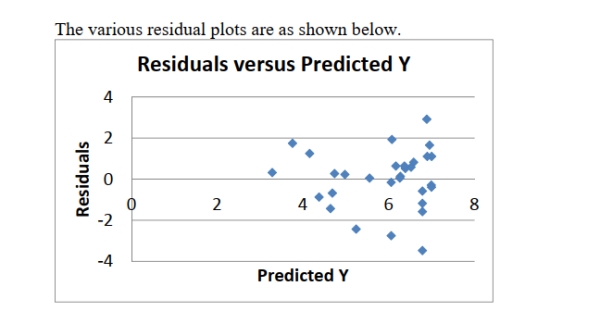Short Answer
SCENARIO 14-16
What are the factors that determine the acceleration time (in sec.) from 0 to 60 miles per hour of a
car? Data on the following variables for 30 different vehicle models were collected: (Accel Time): Acceleration time in sec.
(Engine Size): c.c.
(Sedan): 1 if the vehicle model is a sedan and 0 otherwise
The regression results using acceleration time as the dependent variable and the remaining variables as the independent variables are presented below.
ANOVA

-Referring to Scenario 14-16, what is the correct interpretation for the estimated coefficient for ?
A) As the 0 to 60 miles per hour acceleration time increases by one second, the mean engine size will decrease by an estimated 0.0005 c.c. without taking into consideration the other
Independent variable included in the model.
B) As the engine size increases by one c.c., the mean 0 to 60 miles per hour acceleration time will decrease by an estimated 0.0005 seconds without taking into consideration the
Other independent variable included in the model.
C) As the 0 to 60 miles per hour acceleration time increases by one second, the mean engine size will decrease by an estimated 0.0005 c.c. taking into consideration the other
Independent variable included in the model.
D) As the engine size increases by one c.c., the mean 0 to 60 miles per hour acceleration time will decrease by an estimated 0.0005 seconds taking into consideration the other
Independent variable included in the model.
Correct Answer:

Verified
Correct Answer:
Verified
Q173: A dummy variable is used as an
Q233: SCENARIO 14-4<br>A real estate builder wishes to
Q254: SCENARIO 14-4<br>A real estate builder wishes to
Q273: In a particular model, the sum of
Q331: SCENARIO 14-16 What are the factors that
Q377: SCENARIO 14-20-A<br>You are the CEO of
Q380: SCENARIO 14-11<br>A weight-loss clinic wants to
Q381: SCENARIO 14-20-A<br>You are the CEO of
Q382: SCENARIO 14-15<br>The superintendent of a school
Q383: SCENARIO 14-18<br>A logistic regression model was